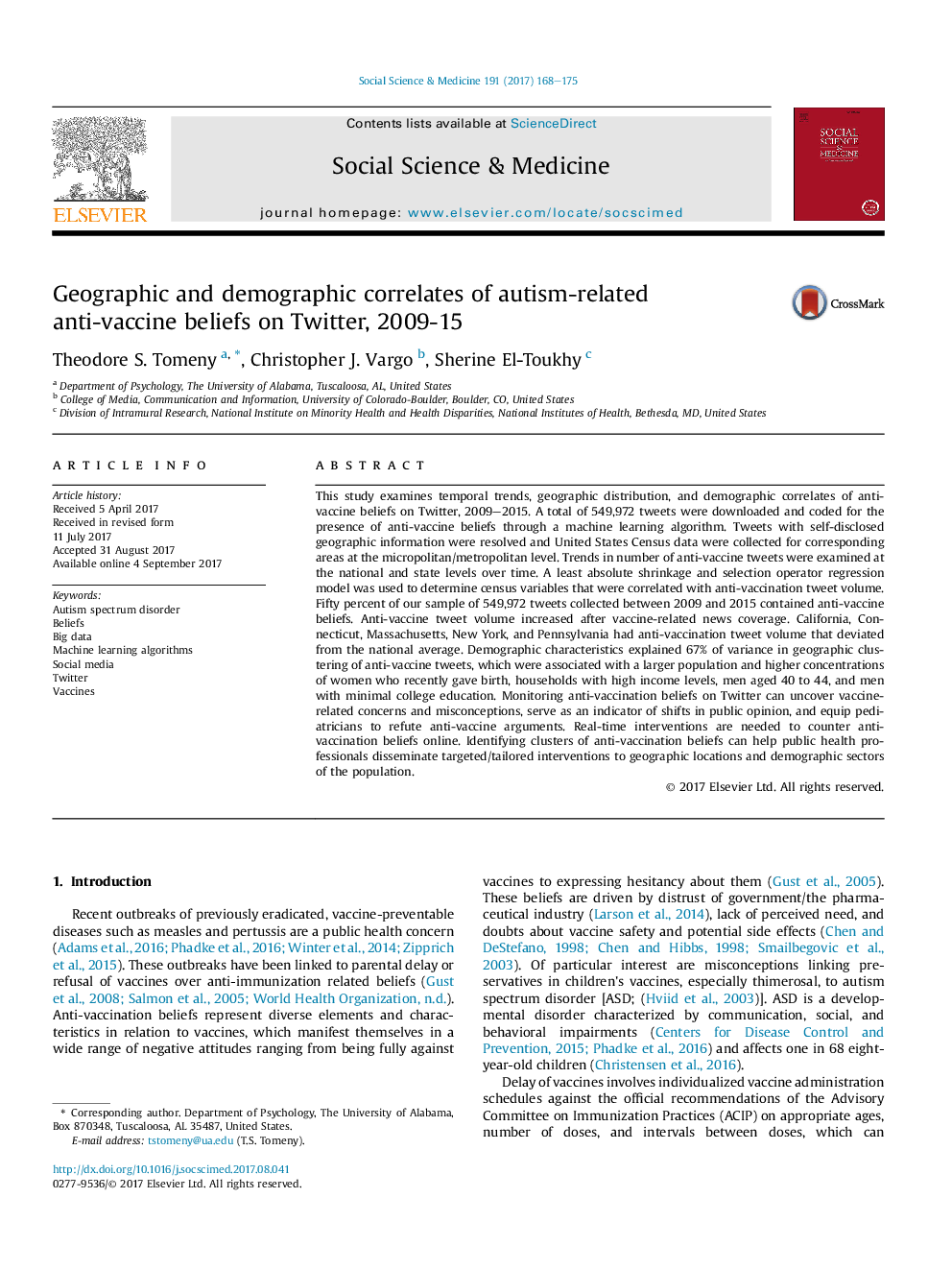| Article ID | Journal | Published Year | Pages | File Type |
|---|---|---|---|---|
| 5046301 | Social Science & Medicine | 2017 | 8 Pages |
â¢272,546 tweets contained anti-vaccine beliefs from 2009 to 2015.â¢Anti-vaccine tweets in five states were higher than the national average.â¢Anti-vaccine tweet volume increased with news coverage of vaccine-related events.â¢Anti-vaccine tweets clustered geographically based on census characteristics.â¢Monitoring social media is beneficial to curtail anti-vaccine beliefs.
This study examines temporal trends, geographic distribution, and demographic correlates of anti-vaccine beliefs on Twitter, 2009-2015. A total of 549,972 tweets were downloaded and coded for the presence of anti-vaccine beliefs through a machine learning algorithm. Tweets with self-disclosed geographic information were resolved and United States Census data were collected for corresponding areas at the micropolitan/metropolitan level. Trends in number of anti-vaccine tweets were examined at the national and state levels over time. A least absolute shrinkage and selection operator regression model was used to determine census variables that were correlated with anti-vaccination tweet volume. Fifty percent of our sample of 549,972 tweets collected between 2009 and 2015 contained anti-vaccine beliefs. Anti-vaccine tweet volume increased after vaccine-related news coverage. California, Connecticut, Massachusetts, New York, and Pennsylvania had anti-vaccination tweet volume that deviated from the national average. Demographic characteristics explained 67% of variance in geographic clustering of anti-vaccine tweets, which were associated with a larger population and higher concentrations of women who recently gave birth, households with high income levels, men aged 40 to 44, and men with minimal college education. Monitoring anti-vaccination beliefs on Twitter can uncover vaccine-related concerns and misconceptions, serve as an indicator of shifts in public opinion, and equip pediatricians to refute anti-vaccine arguments. Real-time interventions are needed to counter anti-vaccination beliefs online. Identifying clusters of anti-vaccination beliefs can help public health professionals disseminate targeted/tailored interventions to geographic locations and demographic sectors of the population.
